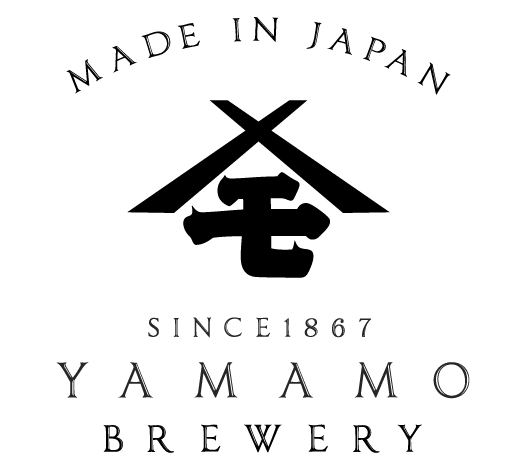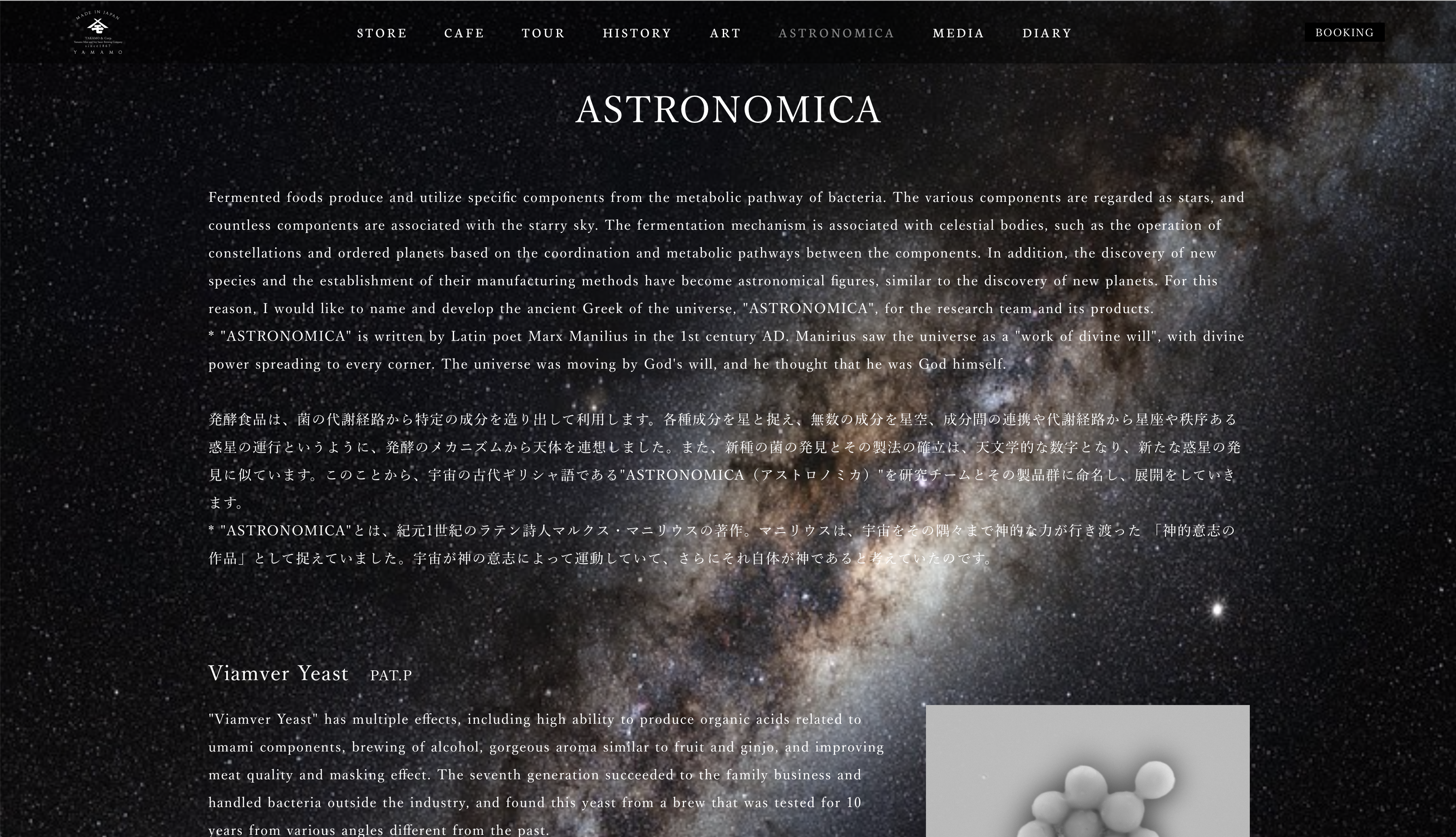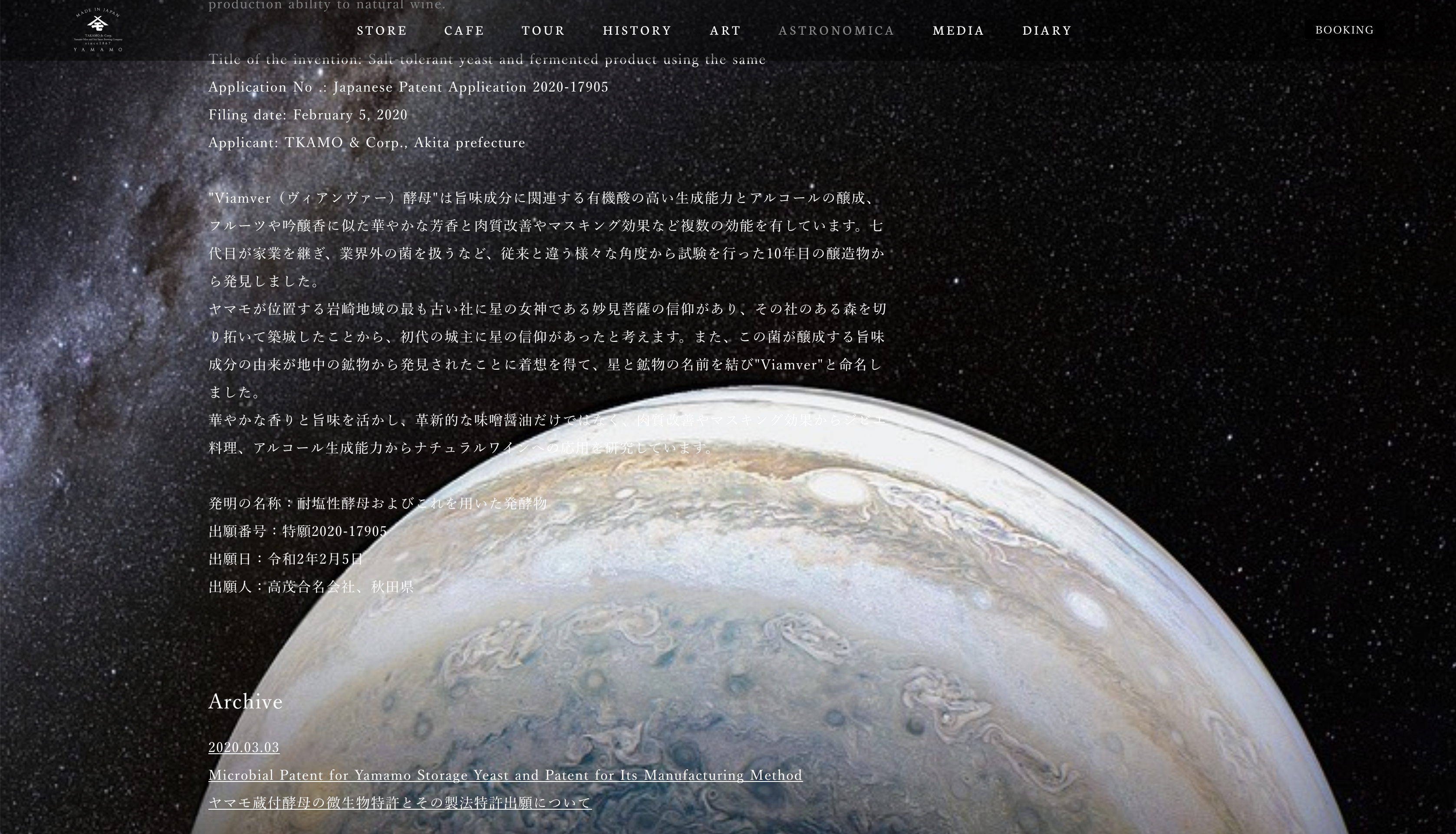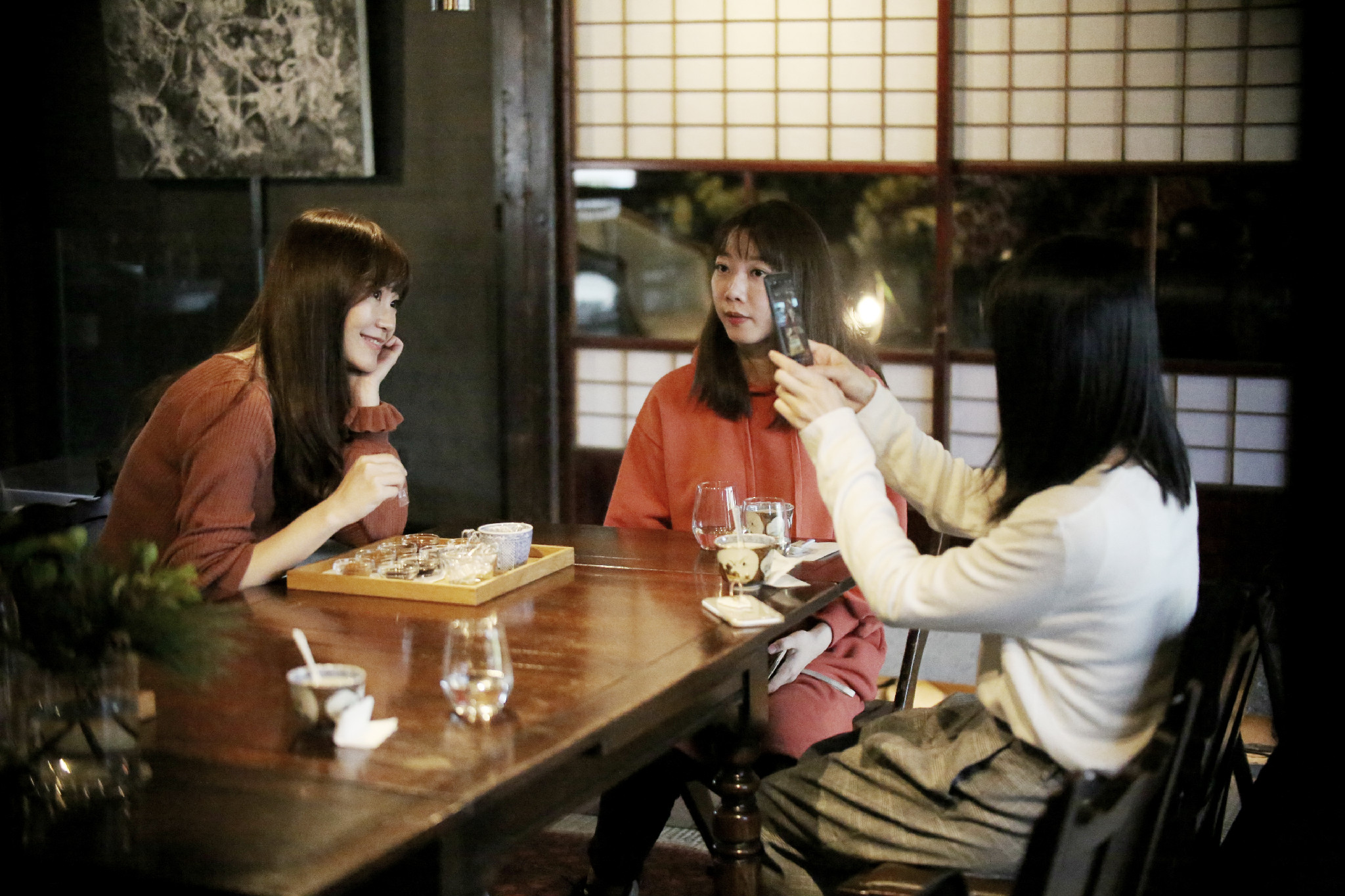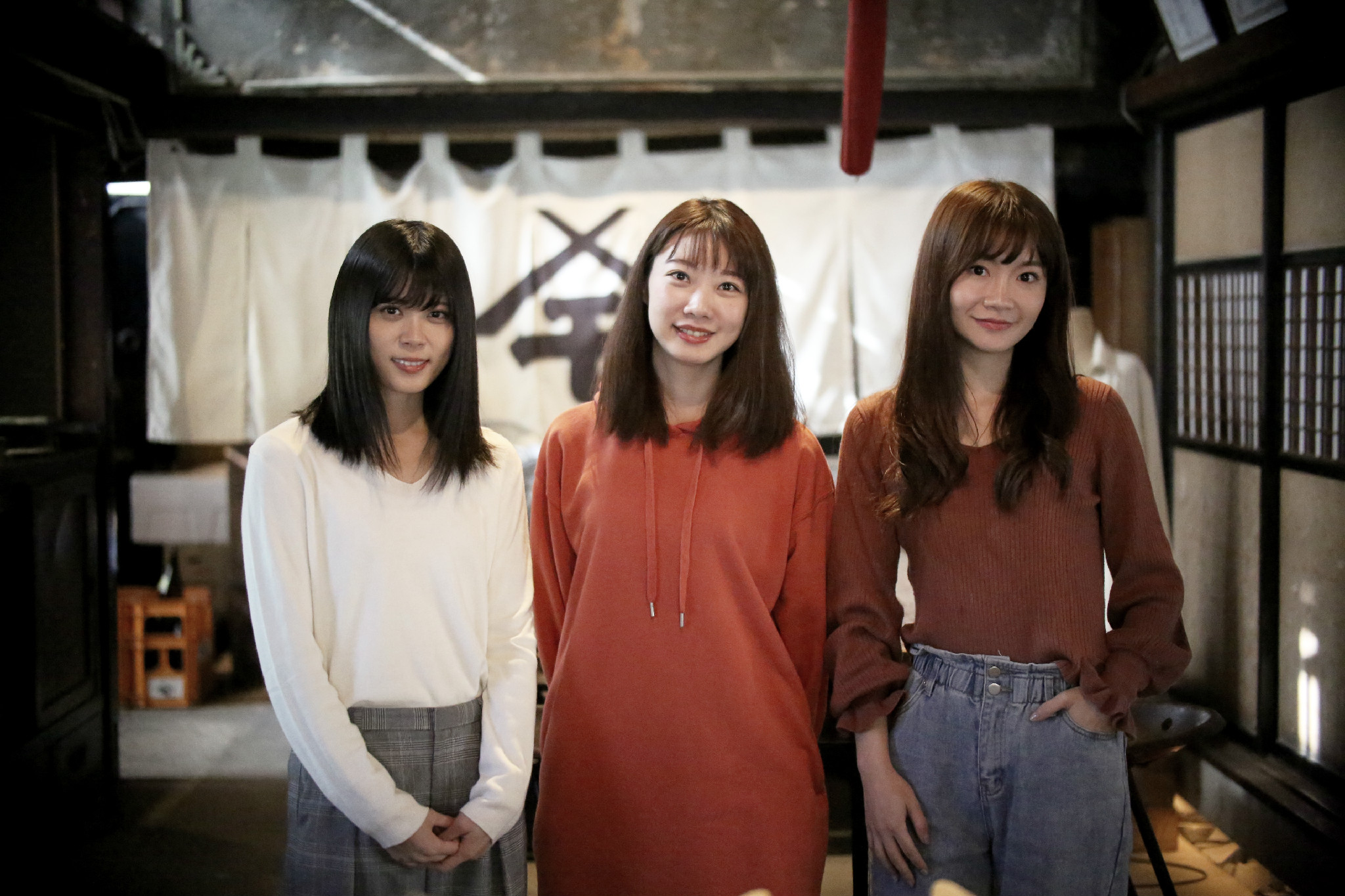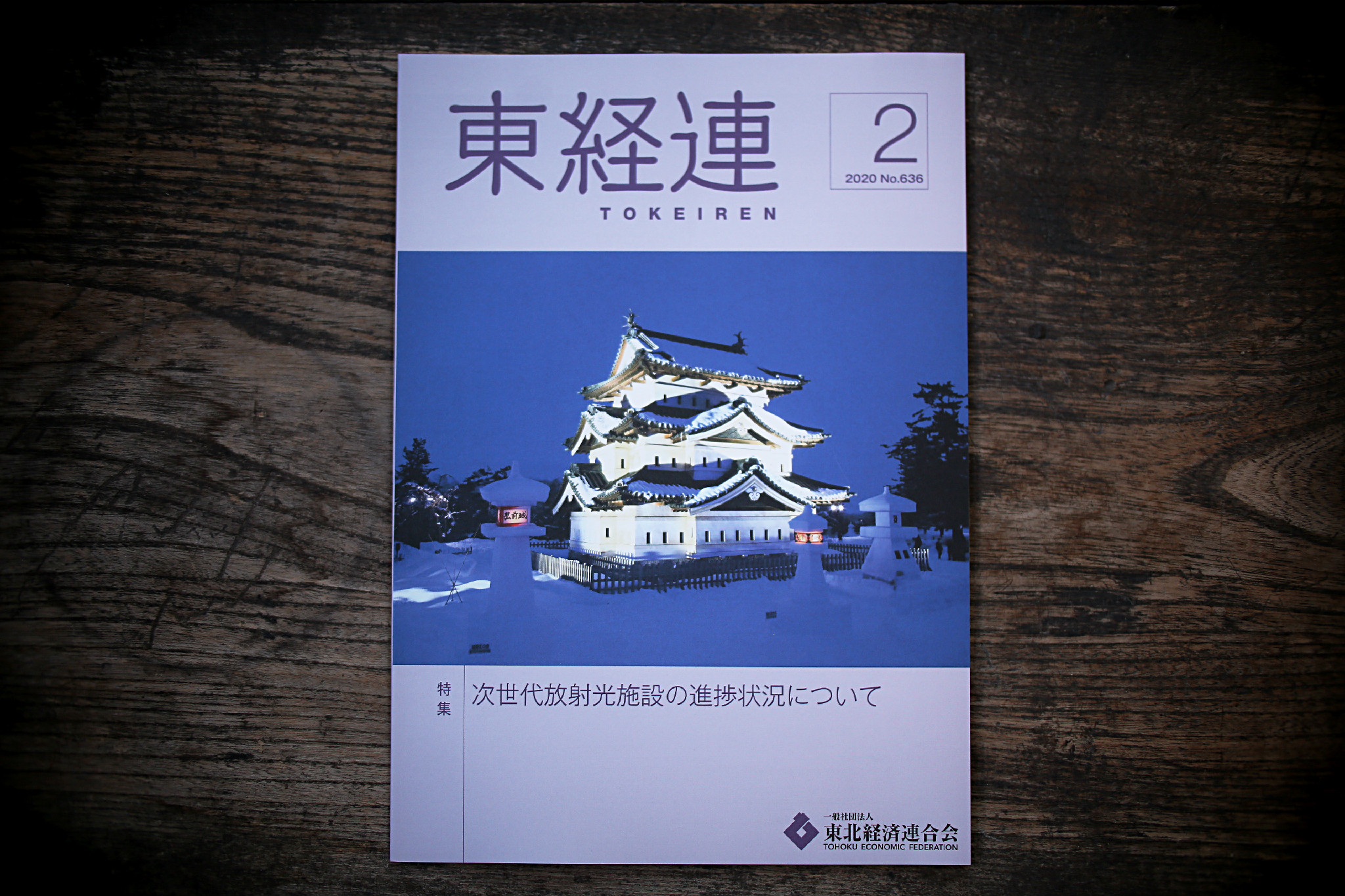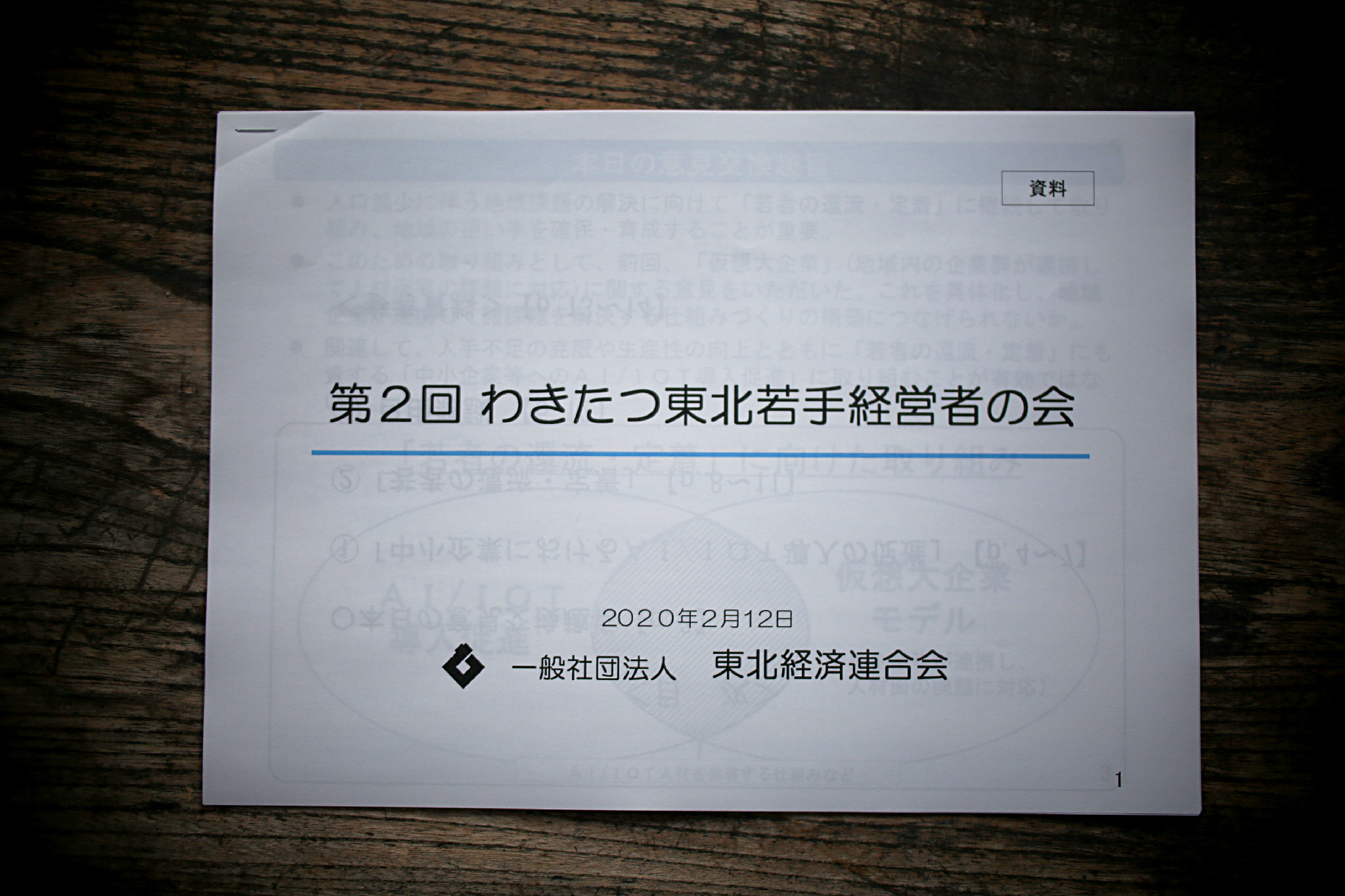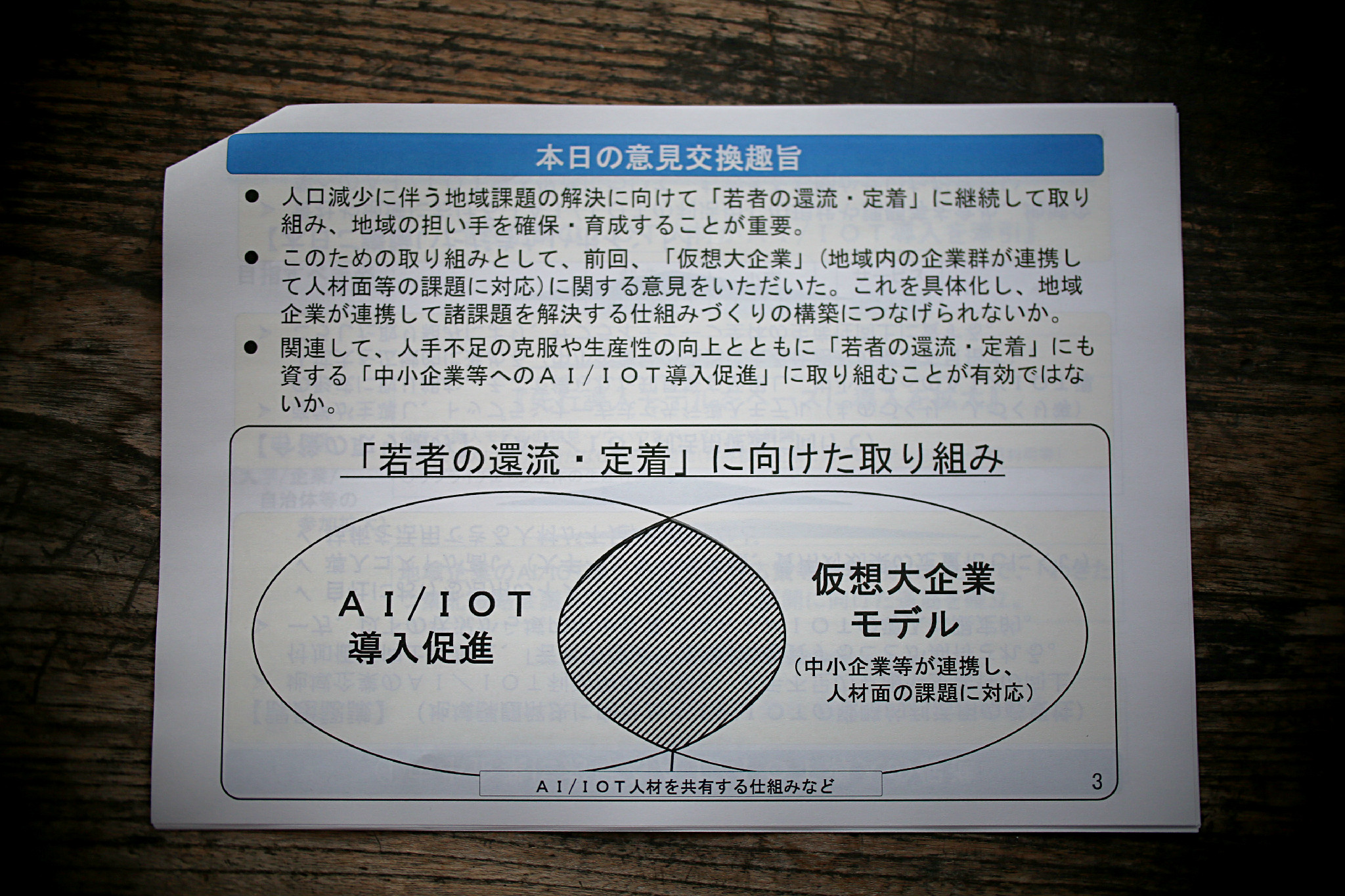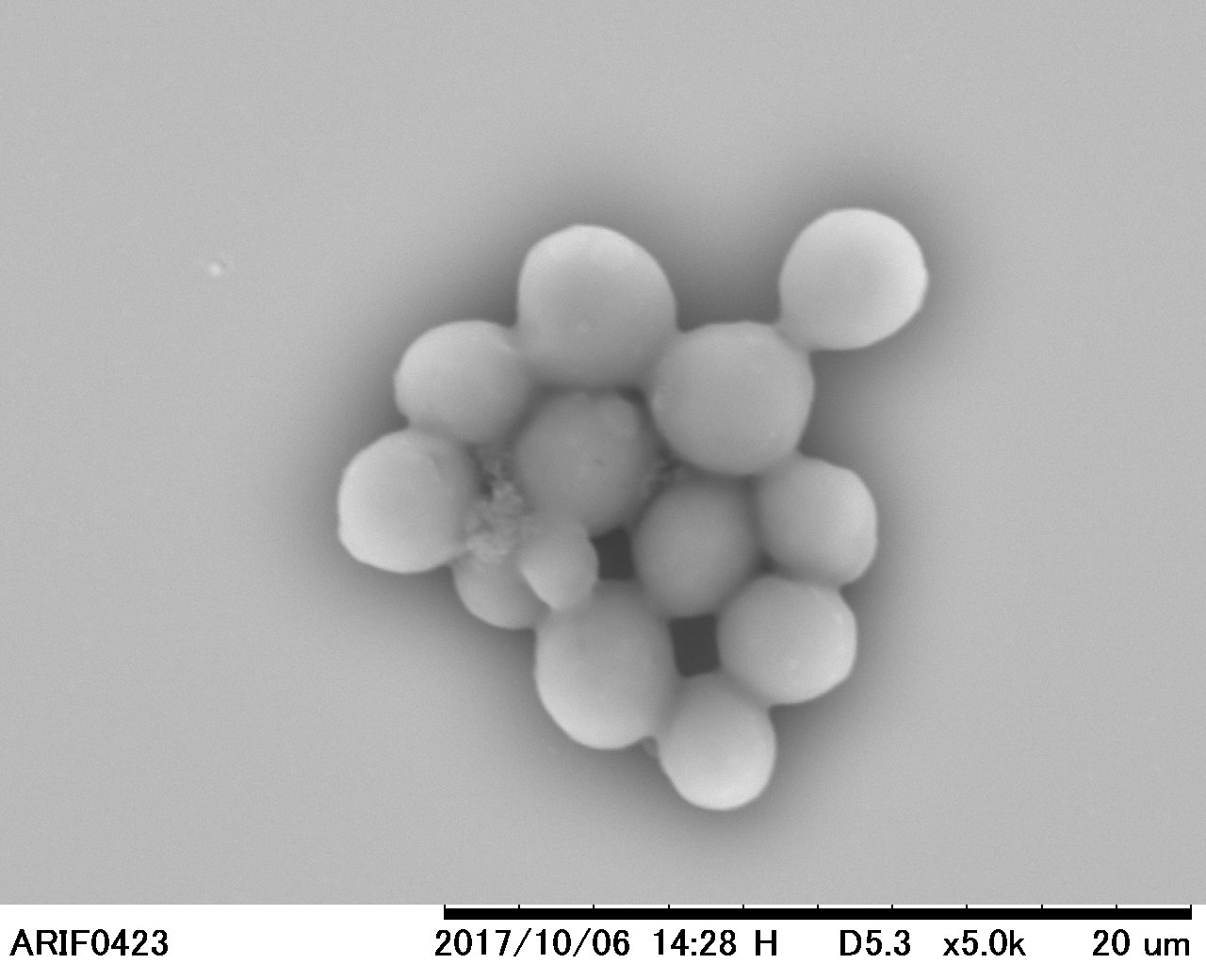国際教養大学で秋田県内の経営者や活動家が講義を行うプログラムに参画させていただきました。弊社ヤマモは午前9時から12時までの授業2つ分を受け持ち、特にコペンハーゲンのSpace10でのプレゼンテーションを中心に行いました。世の中の多くの学びとは、一から教えてもらうものではなく、お会いした方やその活動の最新の関心事について語られることから始まります。最新の話からその背景や内容の核心を推測し、解釈を重ね、咀嚼から学びに変えていきます。沿革や成り立ちなどの基礎的なことは、事前に調べるか既にあるものから推測し、対象の方とやり取りを進めていきます。
七代目の高橋が菌を研究、発見し、その特性を活かした料理を技術者やシェフと開発し、会社の活動や世界のトレンドに沿わせて海外でプレゼンテーションを行ったという内容は、解説をすれば膨大な量になります。家業を継いでからの話などそこに至る経緯は、この講義で伝えるべき内容ではなく、海外での日本の伝統技術に対する考え方や求め方など、現地でしかわからない情報や感覚値を主として伝えるべきと考えました。能動的学びを促すことが一つの教えであり、その学びが最も自身の成長を促します。
講義にご協力いただいた佐藤シェフやインターンの服部さん、社会変革事業部の澤口などの関係者がプロジェクトを多角化し、理解の幅を広げてくれました。学生たちも事前に用意してきたことよりも、その場で考え出した問いを中心に意見交換を行い、密度の濃い内容となりました。いただいたレポートを記載したいと思います。能動的学びから自身の使命の発見と人生に対する興味の追求を実行していただければと思います。関係者の皆様、ありがとうございました。
Report from a lecture at Akita International University
I participated in a program at Akita International University where executives and activists in Akita Prefecture give lectures. Our Yamamo took two lessons from 9 am to 12 am, with a special focus on presentations at Space10 in Copenhagen. A lot of learning in the world does not start from the ground up, but begins with talking about the people you meet and the latest interests in their activities. We guess the background and the core of the content from the latest story, repeat the interpretation, and change from chewing to learning. Basic things such as history and formation are examined in advance or guessed from existing ones, and we will continue to interact with the target people.
The 7th-generation Takahashi researched and discovered the bacteria, developed dishes that made use of the characteristics with engineers and chefs, and gave presentations overseas according to the company’s activities and global trends. That would be huge. The story that led to the story after taking over the family business should not be conveyed in this lecture, but should be mainly conveyed by information and feelings that can only be understood locally, such as the way of thinking and seeking Japanese traditional technology overseas. I thought. Encouraging active learning is one of the teachings, and that learning is most likely to encourage one’s own growth.
Participants such as Chef Sato and intern Hattori who cooperated with the lecture, and Sawaguchi of the Social Transformation Division diversified the project and broadened the scope of understanding. The students exchanged opinions mainly on the questions they imagined on the spot, rather than what they had prepared in advance, and the content was dense. I would like to include your report. I hope that you will be able to discover your mission and pursue your interest in life through active learning. Thank you to everyone involved.
秋田国際教養大學演講報告
我參加了秋田人文大學的一項計劃,在那裡秋田縣的管理人員和激進主義者進行了演講。我們的Yamamo從上午9點到上午12點上了兩節課,特別側重於在哥本哈根Space10上的演講。世界上的許多學習不是從頭開始,而是從談論您遇到的人和對他們的活動的最新興趣開始。我們從最新故事中猜測內容的背景和核心,重複解釋,並從咀嚼轉變為學習。我們會事先檢查歷史和形成等基本事物或從現有事物中推測出來,我們將繼續與目標人群互動。
第7代高橋研究和發現了這種細菌,並與工程師和廚師一起開發了利用這些特性的菜餚,並根據公司的活動和全球趨勢在海外進行了介紹。那將是巨大的。繼承家族企業後導致這個故事的故事,在本講課中不應該傳達,而應該主要通過只能在當地理解的信息和感官價值來傳達,例如在國外思考和尋求日本傳統技術的方式。我以為鼓勵主動學習是其中的一種教義,而學習最有可能促進自己的成長。
與演講者合作的佐藤大廚和服部實習生,社會轉型科的澤口等與會人員使該項目多樣化並擴大了理解範圍。學生們主要是就他們在現場想像的問題交換意見,而不是事先準備的東西,而且內容密集。我想附上你的報告。我希望您能夠通過積極學習來發現自己的使命並追求對生活的興趣。謝謝大家參與。
|SPECIAL THANKS|
KAYA TEI / 小宇宙感光 _Photo Credit
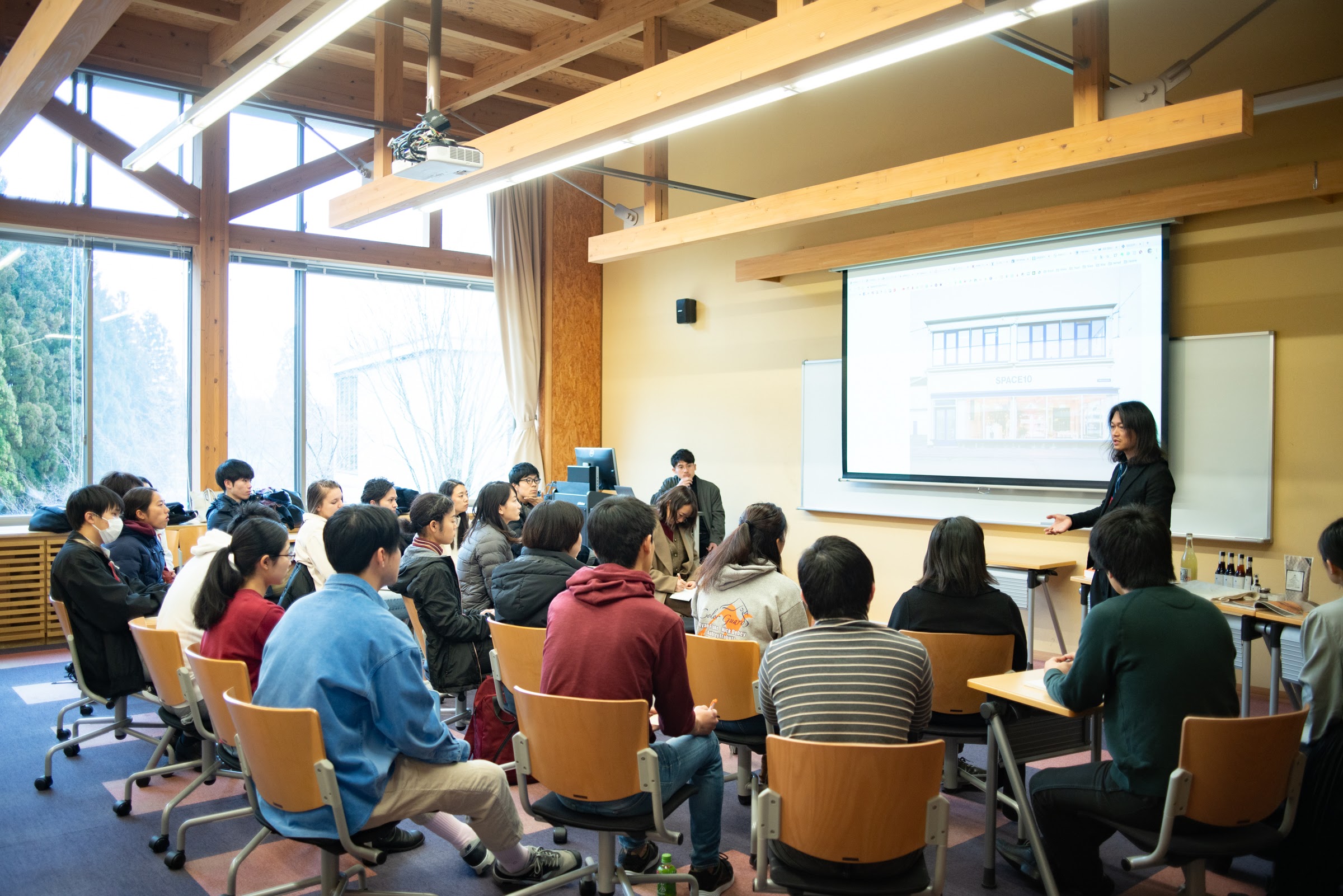
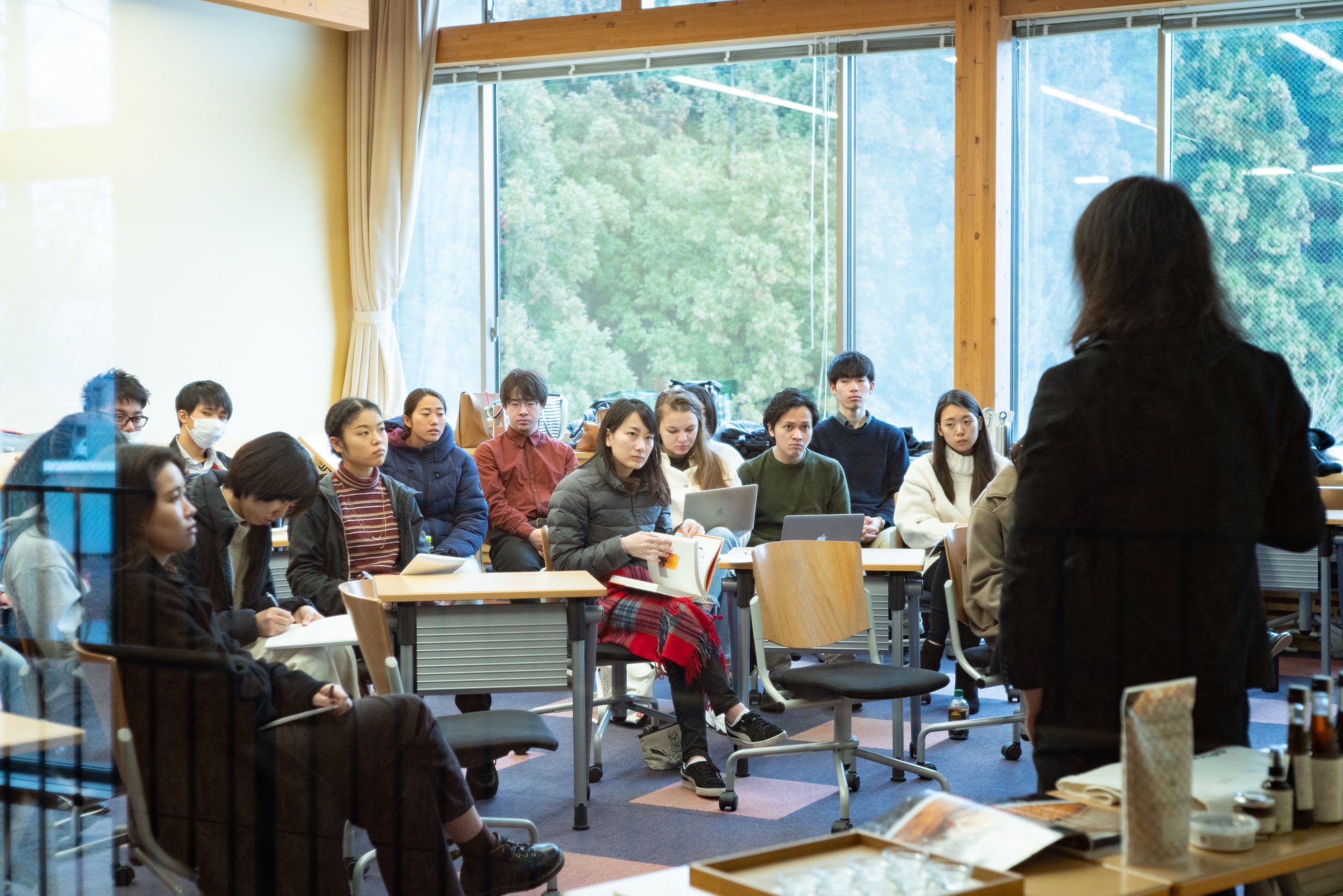
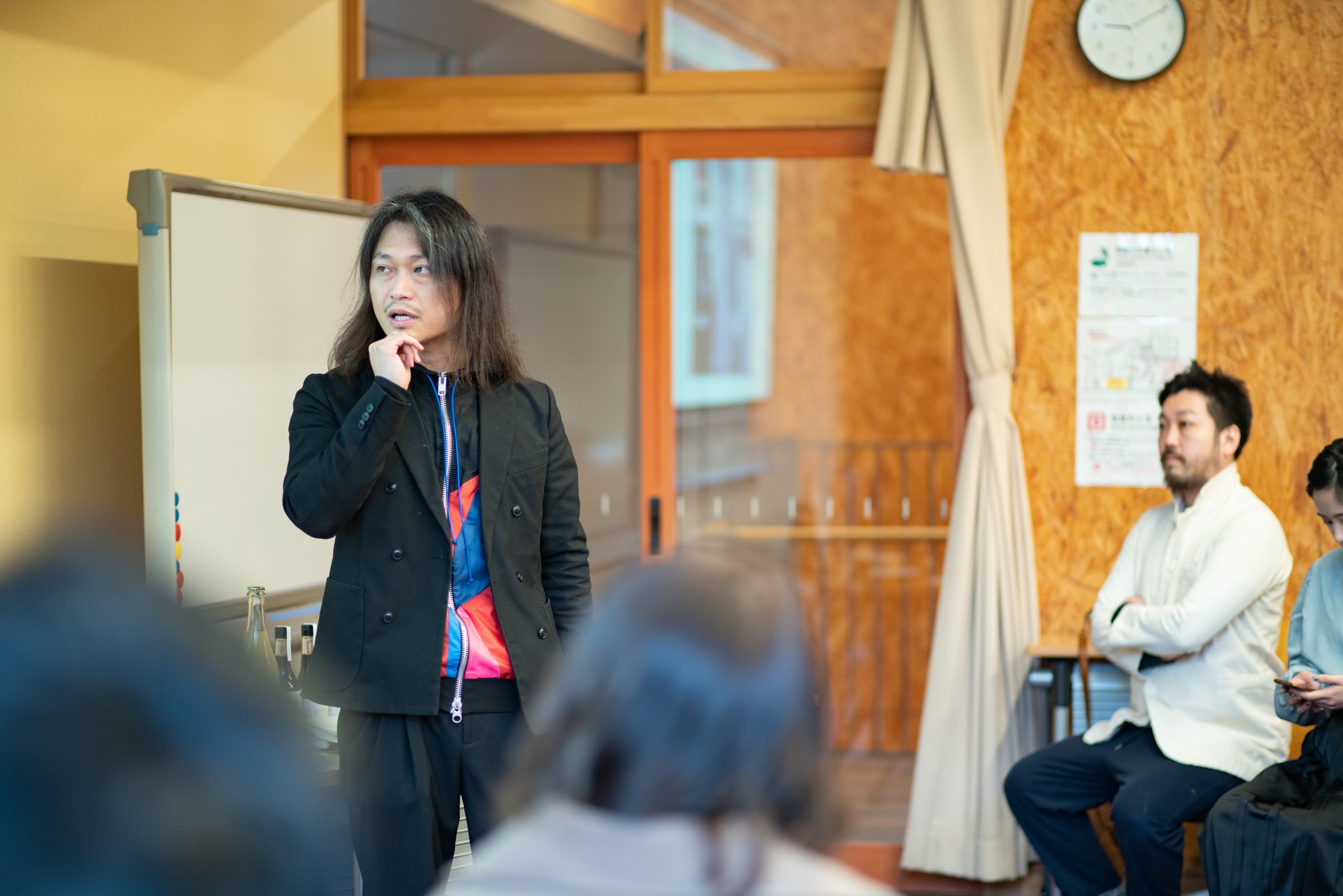


G.S Reaction Paper
彼が講義で言った一言一言を聞いて驚きました。それはとても新鮮で刺激的でした。驚いたことは主に3つあります。
最初の1つは、何かを考えるとき、反対側(彼の言葉で”カウンター”)について考えることでした。そしてそれらの間の中央値が、革新や次のステップに進むための本質を示すポイントです。私はその考えに同意しました。 NetflixなどのSVODサービスに関しては、スマートフォンでいつでもどこでも見たい映画、アニメーションなどを見ることができます。このような状況の結果、一部の人はこれらのサービスの拡大が映画館に行く人々の数に負の影響を与えると考えています。しかし、日本映画製作者協会によると、2019年の映画館の来場者数は史上最高でした。また、売上は新記録を達成しました。これらのデータは、人々がライブエンターテイメントを望んでいることを示しています。経験を誰かと共有したいのです。Netflixの拡大により、同じ場所で同じ時間に誰かと一緒にコンテンツを楽しみたいという人々の需要が高まっています。これは、何かがトレンドになったときにカウンターが示す例の1つだと考えます。そのため、今後何かを考えるとき、カウンターの存在を意識したいと思います。
2つ目は、日本の文化についてです。日本人はすべてを吸収し、それらを最大化してアウトプットする思考を持っています。これは、このグローバル化した社会で日本人が生き残るための強みです。一方、日本人はその文化を視覚化して海外に伝えるのは得意としていません。その結果、文化は外国人によって奪われる場合があります。私はそれについて考えたことがなく、その言葉に感銘を受けました。この言葉は、自分のキャリアや将来日本のために何ができるかを考える上で有益なものです。
最後に、いかにして感性を研ぎ澄ますかということです。彼が言ったのは、社会の基準や価値観を変える人に会ったりその人について調査したりすることでした。そのとき、彼/彼女が何を感じていて、そして今は何を感じているかに意識を向けなければなりません。感じたことや考えたことがないことと向き合うことが、感性を研ぎ澄ますための最も効果的な方法です。
結論として、彼の言葉に私は多くの感銘を受けました。彼の話から多くのことを学びました。だから、私は彼の手法と考え方を将来に役立てたいです。
G.S Reaction Paper
I was amazed to hear every single word he said in the lecture. They are very fresh and exciting for me. There are mainly three things I was astonished.
The first one was to think about the opposite side (counter in his word) when thinking something. Then, the median between them is a point that shows the essence to innovate or go to the next step. I agreed with the idea. When it comes to the SVOD service such as Netflix, you can watch the movie, animation, and something like that whenever and wherever you want to watch by smartphone. Due to this situation, some people think that the expansion of these services has a negative impact on the number of people who go to the movie theater. However, according to the Motion Pictures Producers Association of Japan, Inc, the number of people who go to a movie theater in 2019 was the highest in history. Also, the sales got new record in 2019. These data show that people want the live entertainment. They want to share the experience with someone. The expansion of Netflix enhances people’s demand in which people want to enjoy the contents with someone together at the same place and same time. This is one of the examples that the counter shows up when something becomes the trend. Therefore, I try to think about the existence of counter when thinking something after the lecture.
The second one is about Japanese culture. Japanese people have a way of thinking that absorbs everything and then output the maximized result. This is the advantage for Japanese people to survive in this globalized society. On the other hand, it isn’t very easy for them to visualize the culture and export it. As a result, the culture can be deprived by foreigners. I was impressed by the words because I have never thought about it. Probably this comment is beneficial for me to consider my career and what I can do for Japan in the future.
The last thing is how to improve my sensitivity. What he said was to meet or research persons who change the social standard or value. At the time, you have to care about what he/she felt at the time and is feeling now. Facing what you never felt and thought is the most effective way to improve your sensitivity.
In conclusion, his words impressed me a lot. I learned many things from his talking. So, I want to utilize his method and way of thinking for my future.
G.S Reaction Paper
聽到他在演講中說的每一個字我都感到驚訝。他們對我來說非常新鮮和令人興奮。我主要驚訝的是三件事。
第一個是在思考某件事時要考慮另一面(他的話反說)。然後,它們之間的中位數是一個點,顯示了創新或下一步的實質。我同意這個主意。對於Netflix等SVOD服務,您可以隨時隨地通過智能手機觀看電影,動畫以及類似內容。由於這種情況,一些人認為這些服務的擴展對去電影院的人數有負面影響。然而,根據日本電影製作人協會的數據,2019年上電影院的人數是歷史上最高的。此外,銷售額在2019年創下新紀錄。這些數據表明人們想要現場娛樂表演。他們想與某人分享經驗。 Netflix的擴展增強了人們的需求,人們希望在同一地點和同一時間與某人一起欣賞內容。這是當趨勢成為趨勢時計數器顯示的示例之一。因此,在課後思考時,我會嘗試考慮計數器的存在。
第二個是關於日本文化的。日本人的思維方式是吸收一切,然後輸出最大的結果。這是日本人民在這個全球化社會中生存的優勢。另一方面,對他們而言,形象化文化並輸出文化並非易事。結果,外國人可以剝奪這種文化。這些話給我留下了深刻的印象,因為我從未想過。此評論可能對我考慮自己的職業以及將來對日本的發展很有幫助。
最後一件事是如何提高我的敏感性。他說的是會見或研究改變社會標准或價值的人。那時,您必須關心他/她當時的感受以及現在的感受。面對自己從未有過的感受和想法,這是提高敏感性的最有效方法。
總之,他的話給我留下了深刻的印象。我從他的談話中學到了很多東西。因此,我想利用他的方法和思維方式來發展我的未來。
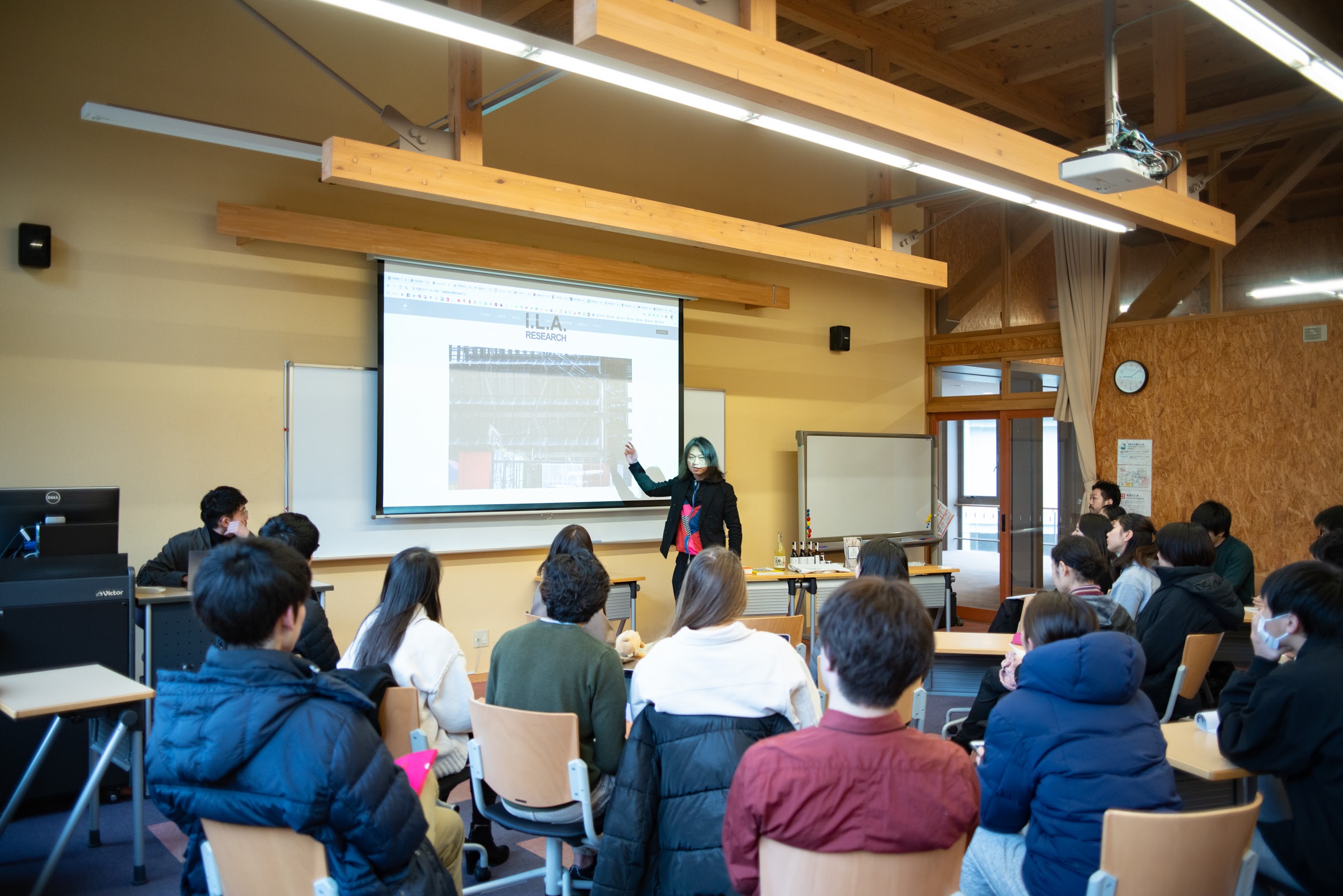
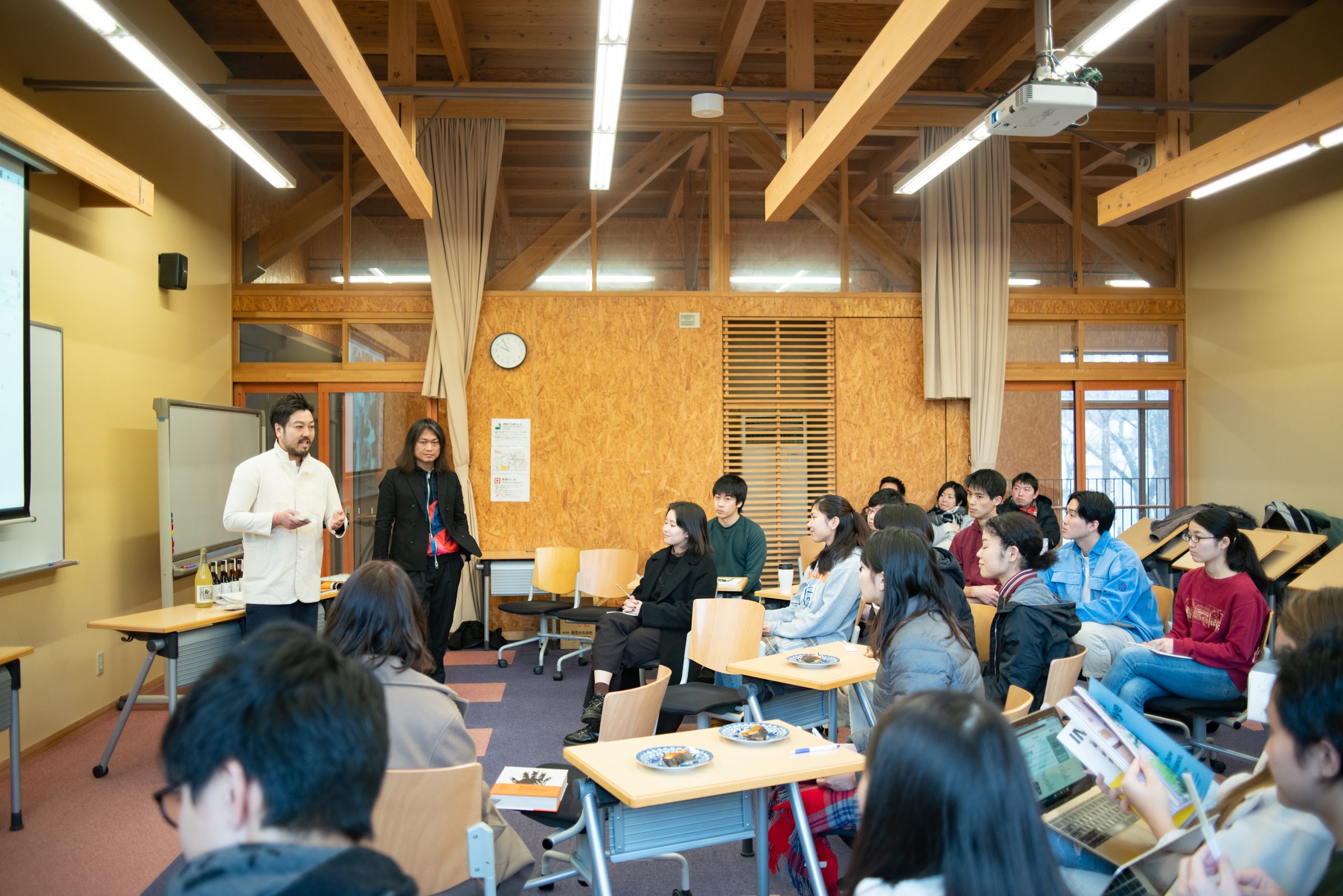
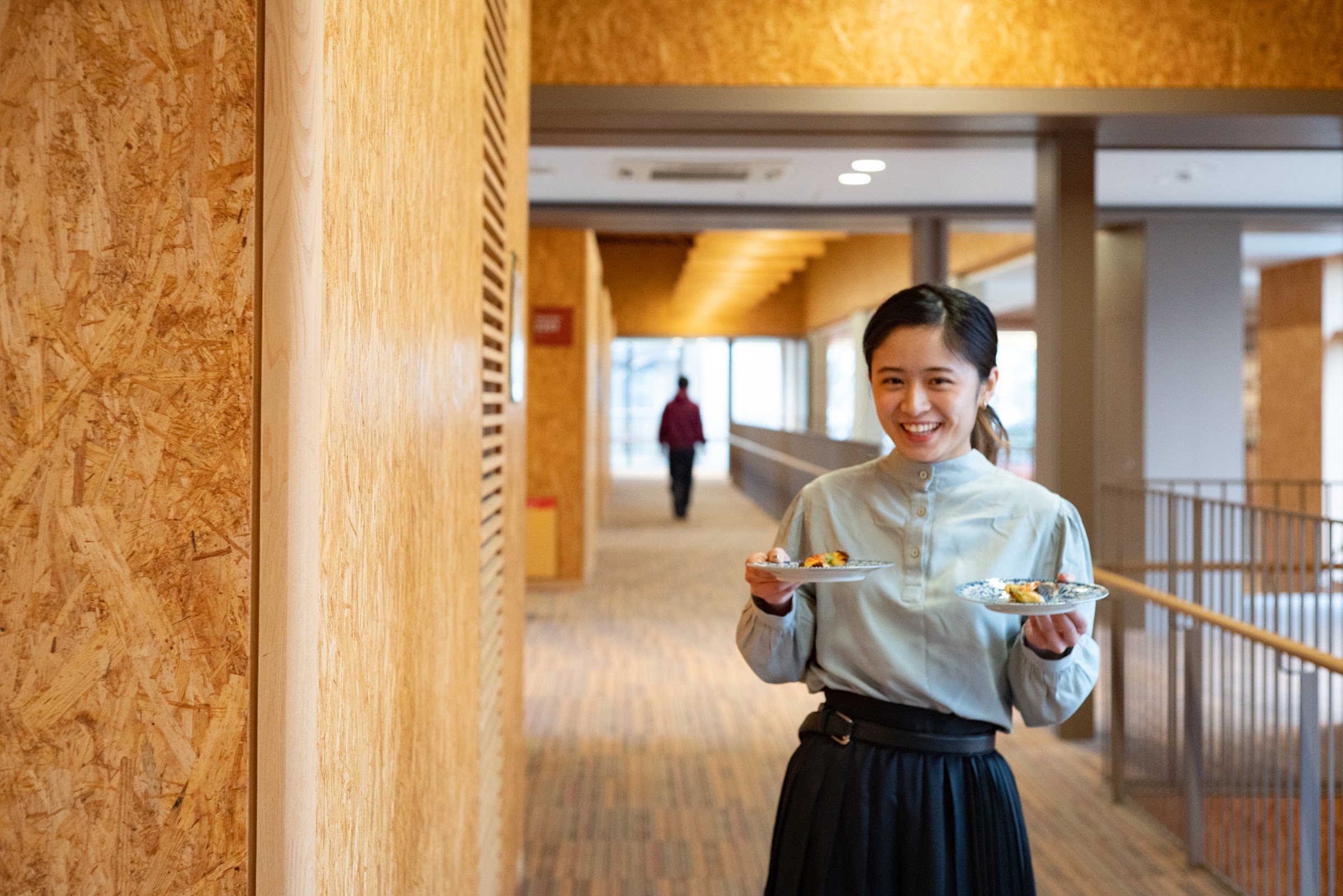
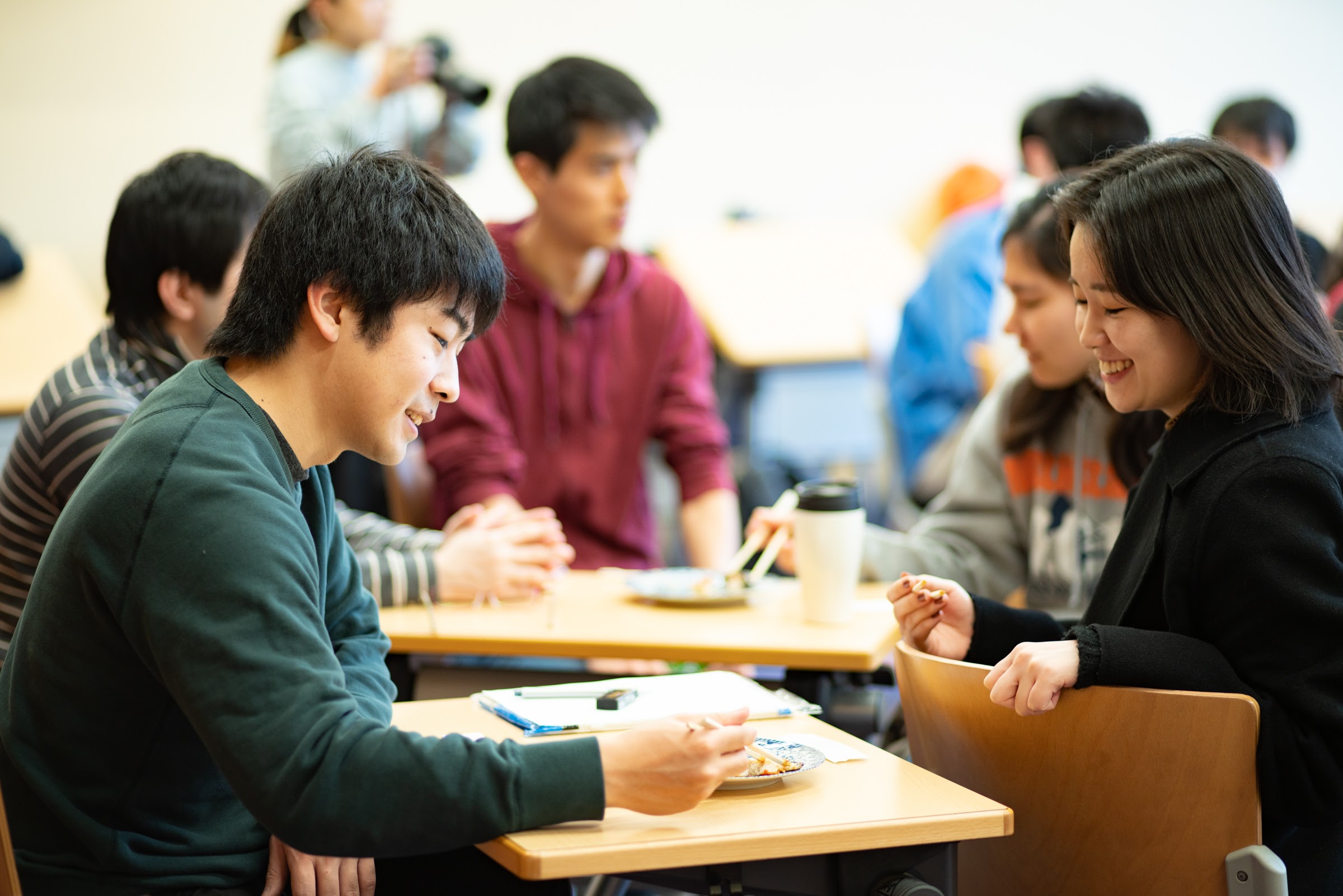
K.N Reaction Paper
小学生の頃、飢えが原因で5秒に一人の子供が亡くなっていることを先生から教わりました。私はそれを聞いてショックを受け、私はその子供たちと発展途上国に住んでいる人々のために何ができるか考え始めました。そのため高校生のときに募金キャンペーンを開始し、水不足に苦しんでいる東南アジア諸国に井戸を提供しました。当時英語の授業で、発展途上国向けの転がして移動することができる水の容器であるQ-drumについて学びました。私はものを作るのが好きでかつ国際協力に参加したいので、開発途上国に住んでいる人々のために製品やプロジェクトを作り出すことで彼らを支援することに興味を持ち始めました。現在私たちは日常生活の中で、家電や電子機器などさまざまな優れたデザインの高性能かつ技術的に高度な製品の恩恵を受けています。しかし、これらの製品は、先進国に住む人々の日常生活をより便利にするために生産される傾向があります。これらの製品のほとんどは、発展途上国に住んでいる人向けではありません。したがって私の夢は、発展途上国に住む人々のために製品やプロジェクトを作成することで、彼らの日常生活を支援することです。
一方、私には別の夢があります。日本の田舎にオムライスレストランをオープンすることです。私はオムライスと陶器が好きです。だから私は、私が作った皿でオムライスを提供したいです。私は他にも何度か海外に行ったことがありますが、私は日本の食と文化が最も快適だと感じています。ですから、日本の田舎でスローライフを送りたいです。
高橋泰さんの話の中で、「私はいつも自分の好きなものをビジネスに取り入れようとしている」と言いました。また彼は、「自分の楽しみをベースにした持続可能な開発に取り組んでいます。持続可能な開発を実現するために自分の欲求は制限したくない」と述べました。これらの言葉は私の胸に強く応えました。なぜなら発展途上国に住む人々のための国際協力に専念することは、日本の田舎でスローライフを送ることに反対するのではないかと思っていたからです。 泰さんは伝統に創造性を取り入れることで伝統的な醸造業を継ぐことを受け入れています。 泰さんはアート、ファッション、都市計画が好きです。今、泰さんは醸造業界で好きなものを楽しみ、革命を起こすことに挑戦しています。一方、私は自分の夢を自分の好きなものに結び付ける方法を知りません。まだ答えはありませんが、どうすればそれができるかを考えます。
K.N Reaction Paper
When I was an elementary school student, I learned that one child dies every five seconds because of hunger from my teacher. I was shocked to hear that, and I started to think about what I can do for these children and people living in developing countries. Therefore, when I was a high school student, I started a fund-raising campaign and provided wells to South-East Asia countries suffering from water shortage. At that time, in English class, I learned Q-drum which is a rollable water container for developing countries. Since I like making things and I want to get involved in international cooperation, I came to be interested in supporting people living in developing countries by creating products or projects for them. Now, in our daily lives, we receive benefits of diverse well-designed, high-performance and technologically advanced products such as household appliances and electronic devices. However, these products tend to be produced to make daily lives of people living in developed countries more convenient. Most of these products are not for people living in developing countries. Therefore, my dream is to support daily lives of people living in developing countries by creating products or project for them.
On the other hand, I have another dream. It is to open an omelet rice restaurant in the countryside of Japan. I like omelet rice and pottery. Thus, I want to serve omelet rice on the plate I made. Although I have been to some other countries, I feel that Japanese food and culture are the most comfortable for me. Therefore, I want to lead a slow life in the rural area of Japan.
In Takahashi Yasushi-san’s story, he said, “I am always trying to incorporate what I like into the business.” Also, he said, “I am trying to tackle sustainable development based on my joy, and I do not like to restrict my desire in order to realize sustainable development.” These words struck home because I wondered whether devoting myself to international cooperation for people living in developing countries opposes to leading slow life in the countryside of Japan. Yasushi-san accepted to succeed a traditional brewing company by incorporating creativity into the tradition. Yasushi-san likes art, fashion and city planning. Now, Yasushi-san challenges to enjoy what he likes in brewing industry and start a revolution. On the other hand, I do not know how I can connect my dream with what I like. I have still no answer yet, but I will think about how I can do that.
K.N Reaction Paper
當我還是一名小學學生時,我得知每5秒就有一個孩子因老師的飢餓而死亡。聽到這一消息我感到很震驚,我開始考慮如何為這些發展中國家的兒童和人們做些什麼。因此,當我還是一名高中生時,我發起了一項募捐運動,並為遭受水資源短缺的東南亞國家提供了水井。那時,我在英語課上學到了Q-drum,它是發展中國家的可滾動水容器。由於我喜歡做事並且希望參與國際合作,所以我開始對通過為發展中國家的人們創造產品或項目來支持他們感興趣。現在,在我們的日常生活中,我們將獲得各種設計精良,高性能和技術先進的產品(例如家用電器和電子設備)的好處。然而,生產這些產品往往是為了使生活在發達國家的人們的生活更加方便。這些產品大多數都不適合發展中國家的人們。因此,我的夢想是通過為發展中國家的人們創造產品或項目來支持他們的日常生活。
另一方面,我有另一個夢想。將在日本的鄉村開設煎蛋飯餐廳。我喜歡煎蛋飯和陶器。因此,我想在自己製作的盤子上煎蛋捲飯。儘管我去過其他國家,但我覺得日本的飲食和文化對我來說最舒適。因此,我想在日本的農村地區過慢的生活。
在高橋靖三的故事中,他說:“我一直在努力將自己喜歡的東西納入業務。”他還說:“我正在努力地基於自己的喜樂來應對可持續發展,我不希望為了實現可持續發展而限制自己的願望。”這些話之所以流行,是因為我想知道是否專心為發展中國家的人們開展國際合作反對在日本農村過慢生活。 泰接受了通過將創造力融入傳統來接替傳統釀造公司的工作。泰喜歡藝術,時尚和城市規劃。現在,靖三先生挑戰享受釀造業中他喜歡的事物並開始一場革命。另一方面,我不知道如何將自己的夢想與自己喜歡的事物聯繫起來。我還沒有答案,但是我會考慮如何做到的。
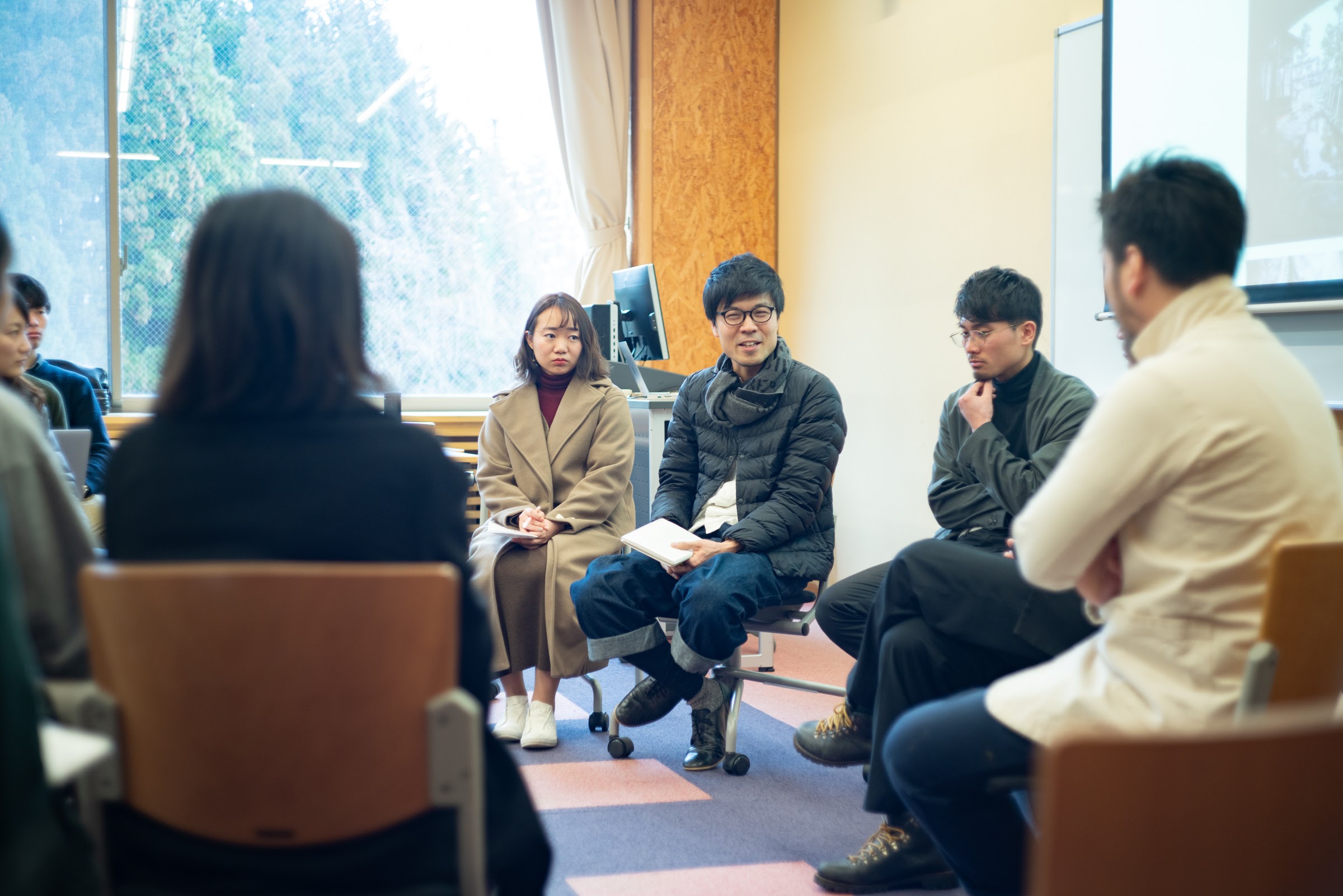
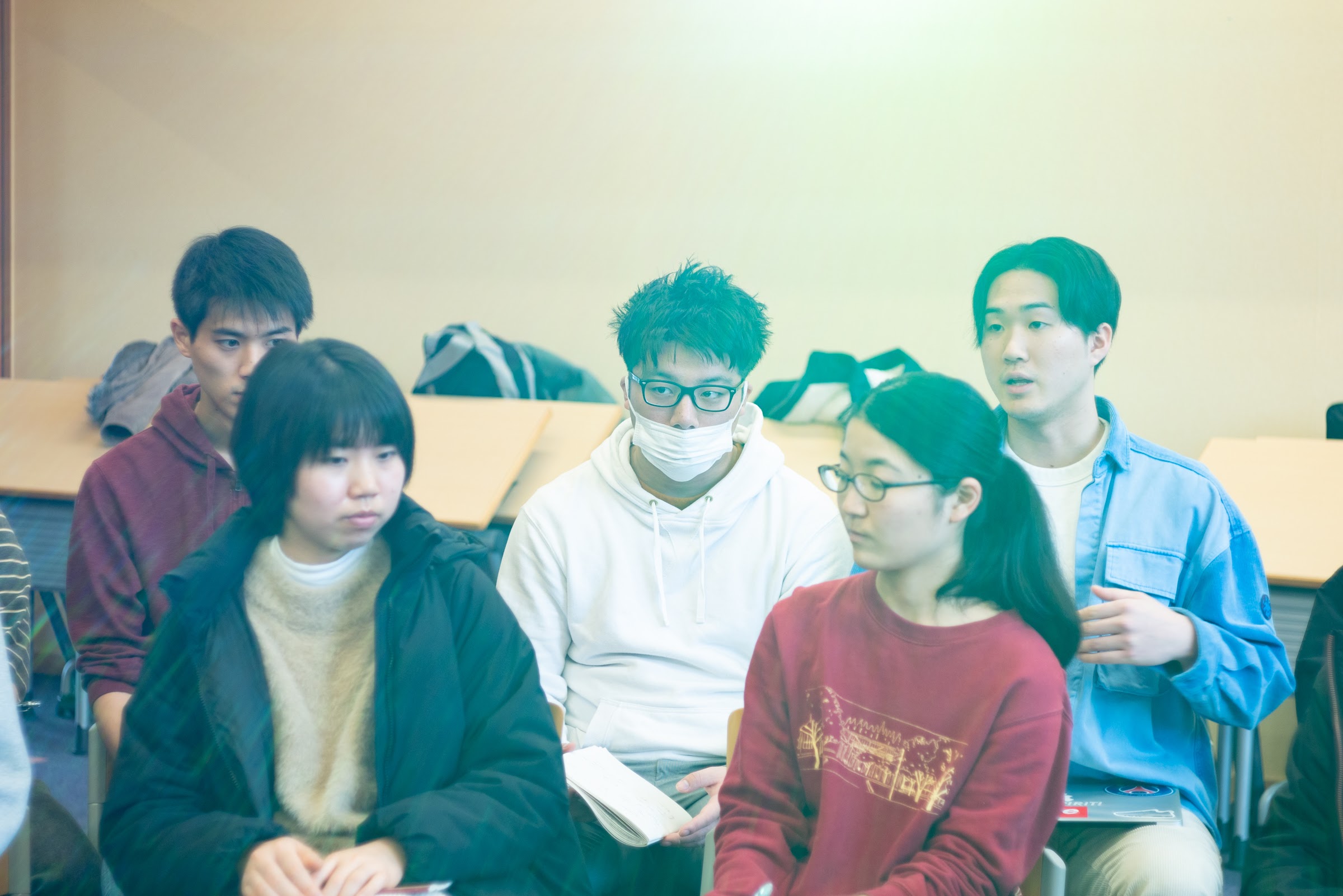
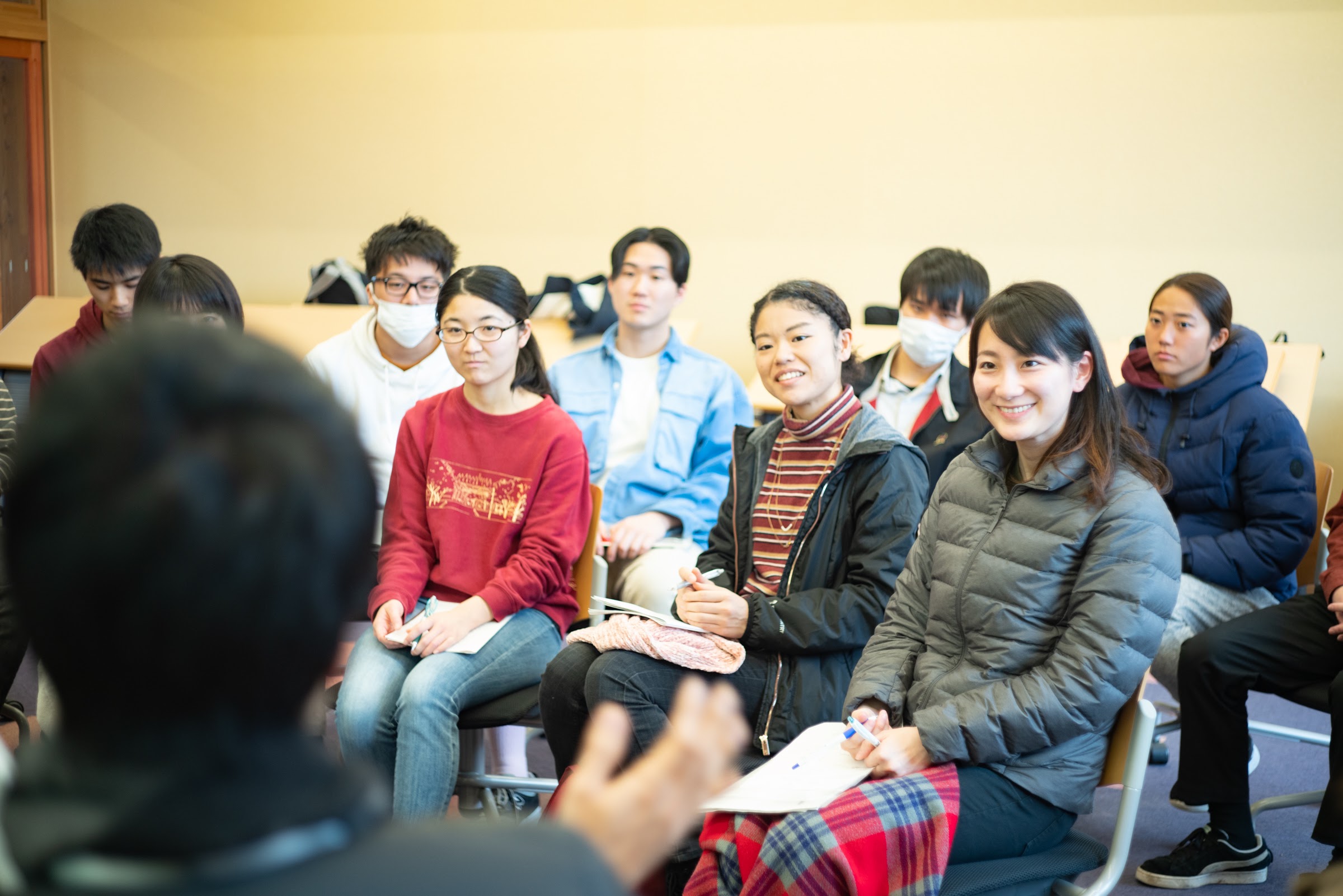
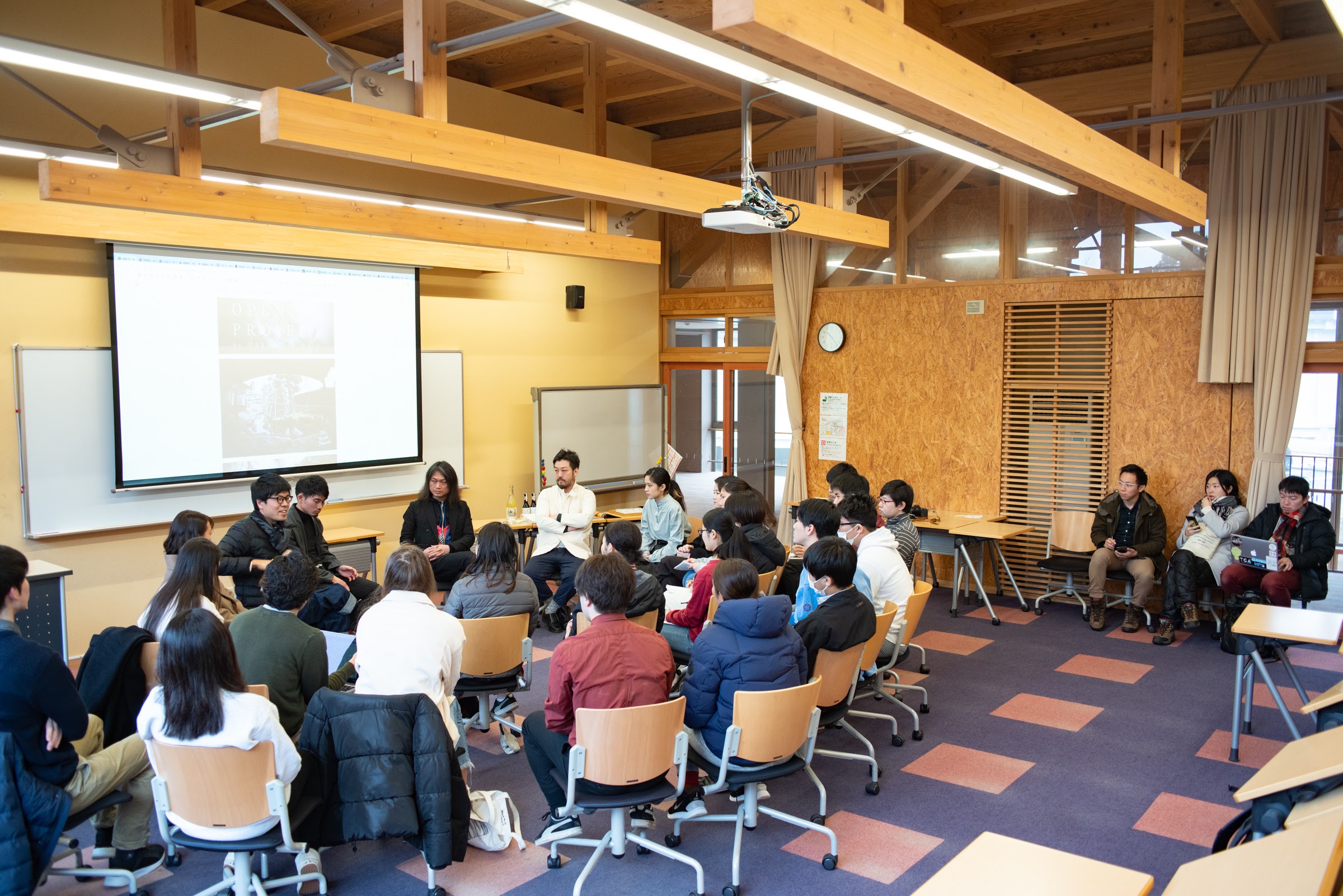
O.L Reaction Paper
ヤマモ味噌醤油醸造元は、Community Based Entrepreneurshipの抜きん出てユニークな例です。ヤマモは、日本の経済が繁栄しビジネスが発展しやすかった将軍時代の終わりの1867年に設立されました(YAMAMO / TAKAMO&Corp. 2020、p.1)。それからの間ずっと、ヤマモは地域コミュニティを支えてきました。たとえば第二次世界大戦中、彼らはビジネスを維持し、味噌と醤油を軍隊に提供し、困難な時期にもコミュニティを支援し、彼らのニーズを最優先にしました(YAMAMO / TAKAMO&Corp. 2020、p.3)。現在、ヤマモは七代目まで続くの家族経営企業であり、その代表である高橋泰さんによってCommunity Based Entrepreneurshipとして定義されています。民間企業とコミュニティベースの企業の主な違いは、コミュニティの利益を達成することが民間の利益よりも優れているという目標に表れています。コミュニティの利益になると、泰さんとヤマモは、モダンなアイデア・創造性・文化の実装を通じて事業を行います。プレゼンテーションでは、高橋泰さんがインスピレーションとモチベーションの源泉を説明するために時間を取っていました。これには、他のコミュニティインフルエンサーやアーティストとのコラボレーション作品だけでなくさまざまな国へ旅行し新しいコミュニティを体験した個人的な背景が含まれます。最も印象的な考えの1つは、泰のインターンから言われました。コミュニティの発展に焦点を当てるのではなく、それを危険にさらして、改善のためのアイデアや解決策を考え出すべきだと言いました。私の意見では、それは興味深いアプローチだと思います。実際、プレッシャーがかかると人々はより生産的で創造的になる傾向があるため、「危険な状況」を想像することは中程度のストレスとして有効性を高める可能性があります(Kohn、2017)。もう一つの説得力のある考えが高橋泰さん自身によって語られ、彼は自分がしている活動に情熱を持ち、持続可能な測定を作成する方法を優先するのではなく充実感を持っていることが不可欠であると説明しました。私の意見では、このようなさまざまな背景と経験は、泰さんと彼の同僚が本物のCommunity Based Entrepreneurshipの基準を満たす会社を設立するのに役立っています。それとは別に、彼らの起業家精神は十分に計画された構造を持っています。つまり、豊かな未来とコミュニティへの大きな利益を保証しています。
参照:
YAMAMO / TAKAMO&Corp.(2020)。歴史。 2020年1月31日、YAMAMO / TAKAMO&CorpのWebサイトから取得:http://yamamo1867.com/history/
コーン、A。(2017年12月18日)。プレッシャーの下でより良いパフォーマンスを発揮しますか? Psychology Today Webサイトから2020年1月31日取得:https://www.psychologytoday.com/us/blog/the-homework-myth/201712/do-we-perform-better-under-pressure
O.L Reaction Paper
Yamamo Miso and Soy Brewing Company is an outstanding and unique example of community-based entrepreneurship. The Yamamo company was established in 1867, at the end of the Shogun era, when the economics of Japan was flourishing, and business was easy to develop (YAMAMO/TAKAMO & Corp, 2020, p. 1). Throughout the years, Yamamo helped the community. For example, during World War II, they maintained the business and provided troops with miso and soy sauce, somewhat assisting the community during the hard times and putting their needs first (YAMAMO/TAKAMO & Corp, 2020, p. 3). Nowadays, the Yamamo company is a family business in its 7th generation and is defined by its leader – Yasushi Takahashi, as community-based entrepreneurship. The main difference between private and community-based enterprise manifested in its goal, where achieving benefit for the community is superior over the private gain. When it comes to the interests of the community – Yasushi and the Yamamo Company do it through the implementation of modern ideas, creativity, and culture. During the presentation, Yasushi Takahashi took the time to explain the source of inspiration and motivation, which included his personal background of traveling to various countries and experiencing new communities, as well as collaborative works with other community influencers and artists. One of the most striking thoughts was said by Yasushi’s intern, who said that one should not focus on the development of the community but view it as in danger so that you can come up with the ideas and solutions for the improvement. In my opinion, it is an interesting approach because, indeed, people tend to be more productive and creative when under pressure, so imagining a “dangerous situation” can pose as moderate stress to boost the effectiveness (Kohn, 2017). Another compelling thought was said by Yasushi Takahashi himself, where he explained that it is essential to have passion for the activity you are doing and have a sense of accomplishment rather than priorities on how to create sustainable measurements. In my opinion, such a variety of backgrounds and experiences helped Yasushi and his coworkers to establish a company that meets the criteria of proper community-based entrepreneurship. Apart from that, their entrepreneurship has an adequately planned structure, meaning that it ensures a prosperous future and significant benefits to the community.
References:
YAMAMO/TAKAMO & Corp. (2020). HISTORY. Retrieved January 31, 2020, from YAMAMO/TAKAMO & Corp website: http://yamamo1867.com/history/
Kohn, A. (2017, December 18). Do We Perform Better Under Pressure? Retrieved January 31, 2020, from Psychology Today website: https://www.psychologytoday.com/us/blog/the-homework-myth/201712/do-we-perform-better-under-pressure
O.L Reaction Paper
Yamamo Miso and Soy Brewing Company是基於社區的企業家精神的傑出典範。 Yamamo公司成立於1867年,即幕府時代的末期,當時日本的經濟蓬勃發展,並且業務易於發展(YAMAMO / TAKAMO&Corp. 2020年,第1頁)。多年來,Yamamo幫助社區。例如,在第二次世界大戰期間,他們維持了業務並向部隊提供了味噌和醬油,在困難時期為社區提供了一定的幫助,並將需求放在第一位(YAMAMO / TAKAMO&Corp. 2020年,第3頁)。如今,Yamamo公司已是第七代家族企業,並且由其領導者高橋泰定義為基於社區的企業家精神。私營企業與社區企業之間的主要區別體現在其目標中,即為社區實現利益要比私人利益優越。當涉及到社區利益時– 泰和Yamamo Company通過實施現代思想,創造力和文化來做到這一點。在演講中,高橋泰花了一些時間解釋靈感和動力的來源,其中包括他到各個國家旅行和體驗新社區的個人背景,以及與其他社區影響者和藝術家的合作作品。泰的實習生說過最令人震驚的想法之一,他說不應只關注社區的發展,而應將其視為危險,這樣您才能提出改善的想法和解決方案。在我看來,這是一種有趣的方法,因為事實上,人們在壓力下往往會變得更有生產力和創造力,因此想像“危險情況”可能會帶來適度的壓力以提高有效性(Kohn,2017年)。高橋康史本人也說了另一種引人入勝的想法,他解釋說,對您正在做的活動充滿熱情,並且要有成就感,而不是優先考慮如何建立可持續的衡量標準是至關重要的。在我看來,如此多樣的背景和經驗幫助泰和他的同事們建立了符合適當的以社區為基礎的企業家精神的公司。除此之外,他們的企業家精神有充分計劃的結構,這意味著它確保了未來的繁榮和社會的重大利益。
參考文獻:
YAMAMO / TAKAMO&Corp.(2020年)。歷史。於2020年1月31日從YAMAMO / TAKAMO&Corp網站檢索:http://yamamo1867.com/history/
Kohn,A.(2017年12月18日)。我們在壓力下表現更好嗎?於2020年1月31日從Psychology Today網站檢索:https://www.psychologytoday.com/us/blog/the-homework-myth/201712/do-we-perform-better-under-pressure

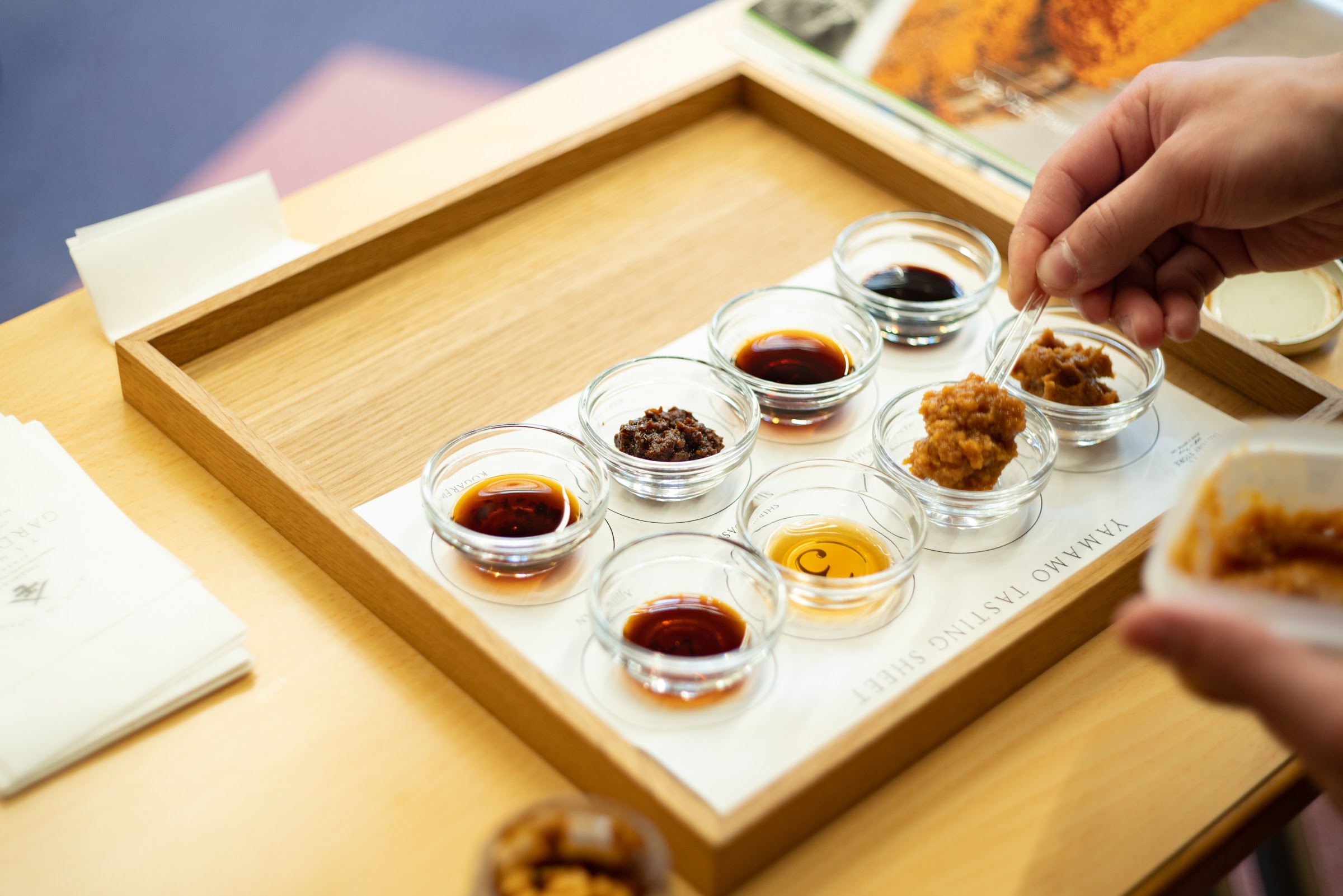


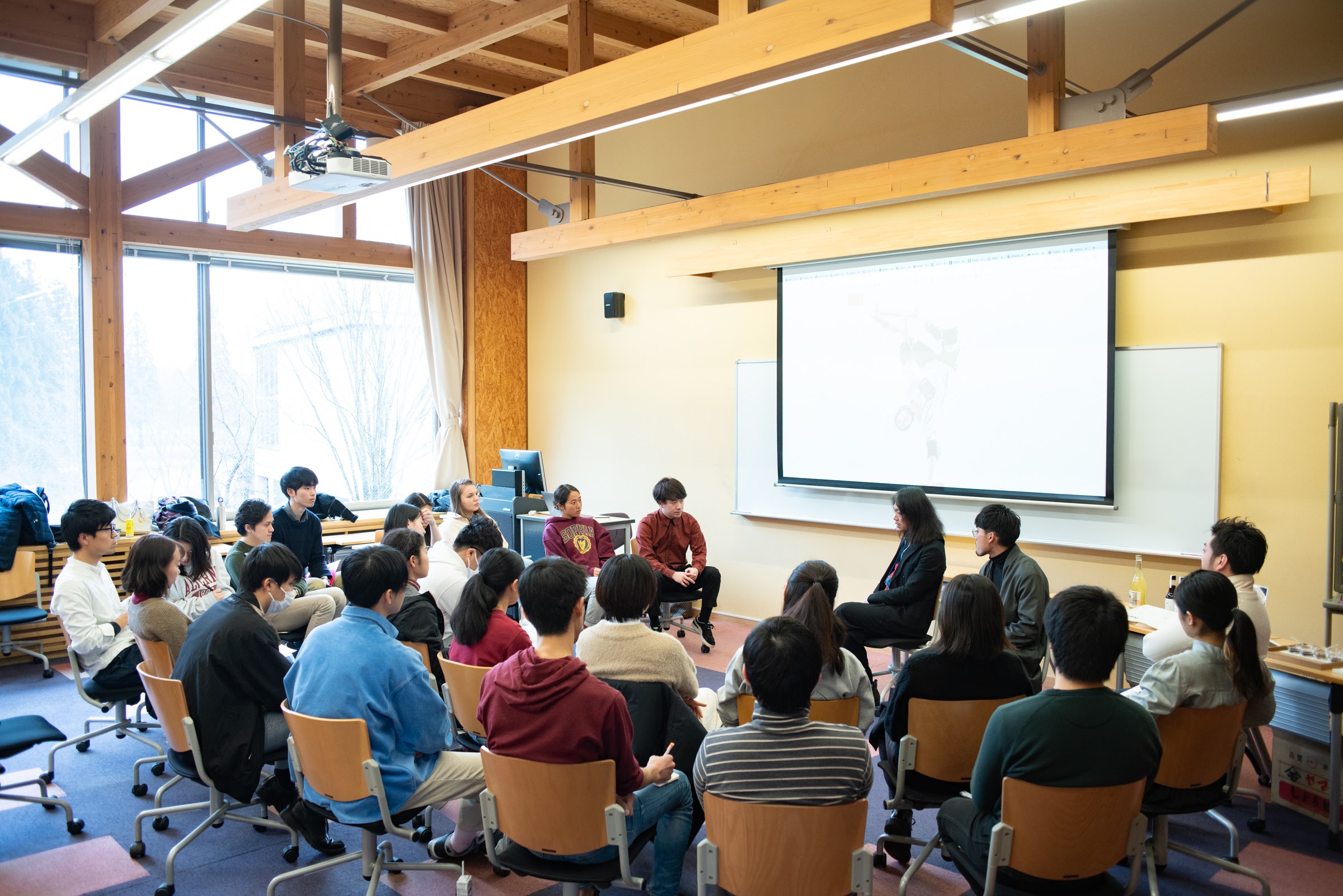
I.S Reaction Paper
正直に言うと、高橋さんとの3日目の授業は、これまでの人生で間違いなく最高の授業でした。 2時間45分で、私は新しい世界を見て、本当に感動し、視野を広げたいという欲求を達成しました。彼は本質的な知識と非常に広範囲にわたる経験に裏打ちされた、深い知的好奇心と偉大な感性を持っています。
彼は家族経営の七代目であり、味噌醤油の醸造元です。しかし、彼は伝統的なビジネスの後継者ではありません。革新は、彼が企業を発展させるために焦点を当てているコンセプトの1つです。工場の改築を進めアートギャラリーとカフェを設備し自身で海外展開のビジネスを確立したのは、彼の家族経営への貢献です。また、彼は工場での多くの経験を通じて新しい酵母を発見しました。伝統的なビジネスを維持するだけでなく、ビジネスを拡大するための新しい道を見つけたことも、彼が「起業家」として達成したことです。
彼は多くの国も訪れました。おそらく、彼よりも海外でのチャンスを活用できる人を見つけるのは難しいかもしれません。彼は旅行を通して多くのことを学びます。そしてその後、彼は経験を詳細に解釈し、理解し、哲学にするために多大な努力をします。実際、私も含めて多くの人々は同じ行動をとろうとしますが、膨大な背景調査と咀嚼に費やす時間で他の人と区別することができます。率直に言って、私は彼の応用理論を完全に理解できませんでした。
しかし、自分の経験を深く省みて起こりうる経験の前により多くの調査を行うことが、いかに重要であるかを認識しました。
さらに、彼の言葉は完全に洗練され整理されています。彼は講義で非常に多くのことを私たちに話し、そして彼が述べたすべてのことは彼の実際の経験とかなりの知識によって支えられています。昨年のインドでのインターンシップで上司は、語れる経験を積みなさい繰り返し言っていました。
高橋さんの講演を通して、コンセプトについてもっと理解できました。人は人生の中で多くの経験をすることができます。しかし、自分の経験で他の人に影響を与えることは困難ですが、非常に重要です。彼がそうであるように、私たち自身の言葉と哲学、そしてすべての経験を自身の価値基準にしていくのは、私たちの助けになるでしょう。
彼の講義は正しく解釈するのが少し難しかったです。そしてもちろん、英語で説明するのは難しいです。しかし先日の授業は、私が大学生として、一人の人間としてより高いステージに近づくのを必ず助けてくれます。
追伸
私は彼に来年度の夏からインターンとしての受け入れを頼みました。できるかどうかはわかりません。しかし、もしできれば彼からもっと吸収したいと思っています。とにかく、20歳の大学2年生で彼に会えたのはとてもいい経験でした。
I.S Reaction Paper
To be honest, the third class with Mr. Takahashi was the best class I have ever had in my whole life definitely. In two hours and forty-five minutes, I saw the new world, was really moved, and achieve a desire to broaden my horizons more. He has a deep intellectual curiosity and great sensibilities backed up with background knowledge and his highly extensive experiences.
He is the seventh generation of his family business, a soy sauce and miso brewery. However, he is not an ordinary successor of the traditional business. Revolution is one concept he focuses on to extend his enterprise. Reforming an art gallery and cafe in his factory and establishing an export business by himself is his contribution to the family business. Also, he found new yeast after putting a lot of experience at his factory. Not only to keep traditional business but also to find a new alley to expand his business is what he has done as an ‘entrepreneur.’
He has visited many countries as well. Perhaps, it could be difficult to find anybody else who can utilize their chance to go abroad than him. He learns a lot of things through the trip. And after that, he makes much effort to interpret his experience into detail, understanding and apply them to his philosophy. Indeed, many people, including me, try to do the same behaviors as well, but we can differentiate him from others with the number of background researches and time to interpretation. Frankly, I could not wholly understand his theory of application to himself.
However, I realized how important it is to reflect my experience profoundly and have more researches before possible experiences.
Moreover, his words are completely sophisticated and organized. He told us so many things in the lecture, and all the things he stated is supported by his real experiences and considerable knowledge. In my internship in India last year, my bosses repeatedly said to have experience enables us to make a story. Through Mr. Takahashi’s lecture, I could
understand more about the concept. People could have a lot of experience in their lives. However, it is difficult but essential to influence others with one’s experience. As he does, it perhaps helpful for us to put all the experience into our scale with our own words and philosophy basis.
His lecture was slightly difficult to interpret appropriately. And of course difficult to explain in English. However, the last class definitely help me to approach a higher stage as a university student and one human being.
P.S.
I asked him to invite me as an intern from next summer. I do not know whether I can do or not. However, if I could, I hope to absorb more from him. Anyway, it was so nice experience to meet him in my 20, a sophomore.
I.S Reaction Paper
老實說,高橋先生的第三堂課絕對是我一生中有過的最好的一堂課。在兩小時四十五分鐘內,我看到了一個新世界,真的很感動,並渴望擴大自己的視野。他具有深厚的求知慾和敏銳的才能,並具有背景知識和豐富的經驗。
他是家族企業的第七代,是一家醬油和味mis啤酒廠。但是,他不是傳統業務的普通繼任者。革命是他致力於擴展事業的一個概念。他對自己的工廠的美術館和咖啡館進行改造,並親自建立出口業務,這是他對家族企業的貢獻。此外,他在工廠積累了很多經驗後發現了新酵母。作為一個“企業家”,他不僅要保持傳統業務,而且要找到一條新的小巷來擴展業務。
他還訪問了許多國家。也許,很難找到比他更能利用自己的機會出國的人。他在旅途中學到了很多東西。在那之後,他付出了很多努力來將自己的經歷詳細地解釋,理解並將其運用到他的哲學中。確實,包括我在內的許多人也嘗試做相同的行為,但是我們可以通過背景研究的數量和解釋時間來將他與其他人區分開。坦白說,我無法完全理解他對自己的適用理論。
但是,我意識到深刻地反映我的經驗並在可能的經驗之前進行更多的研究是多麼重要。
而且,他的話是完全成熟和有條理的。他在講座中告訴了我們很多事情,他所說的一切都得到了他的真實經驗和豐富知識的支持。去年我在印度實習期間,我的老闆們一再表示自己的經驗使我們能夠講一個故事(日語)。通過高橋先生的演講,我可以
了解更多有關該概念的信息。人們在生活中可能會有很多經驗。但是,以一個人的經驗去影響他人是很困難但必不可少的。正如他所做的那樣,以我們自己的語言和哲學基礎將所有經驗納入我們的規模也許對我們有所幫助。
他的演講有點難以正確解釋。當然,用英語也很難解釋。但是,最後一堂課肯定會幫助我成為一名大學生和一個人,進入更高的階段。
附言
我要求他從明年夏天開始邀請我擔任實習生。我不知道我是否能做。但是,如果可以的話,我希望從他那裡吸收更多。無論如何,在我20歲那年大二的時候認識他真是太好了。
